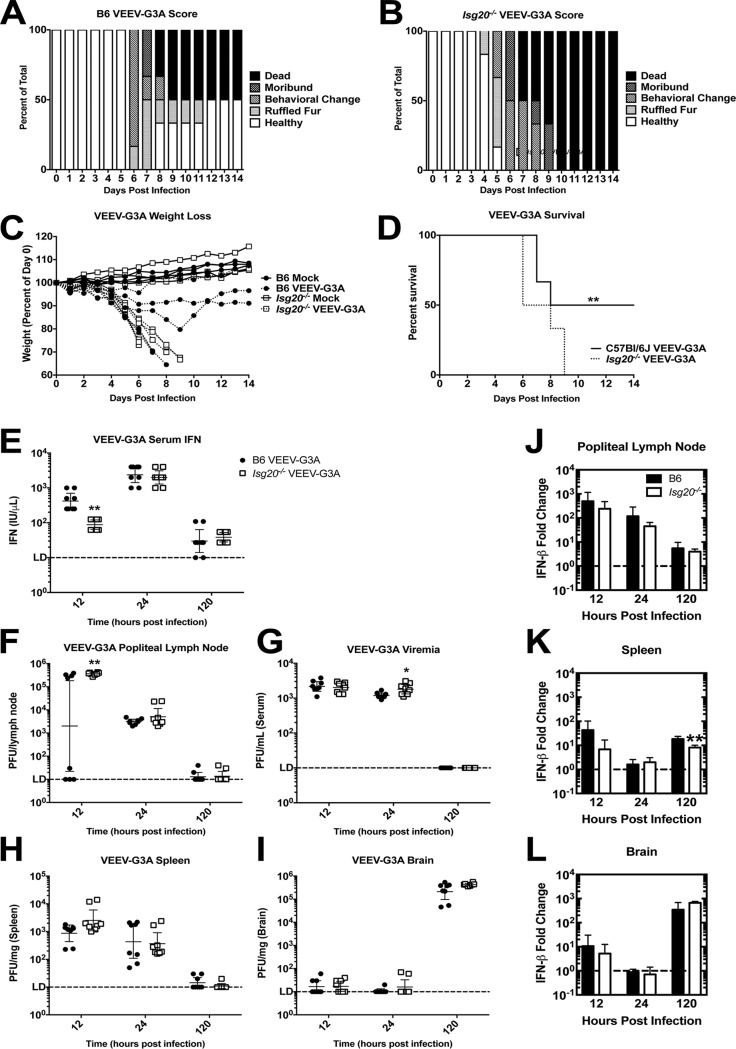FIG 7.
Isg20−/− mouse data support the idea of increased virulence of the IFIT1-sensitive VEEV-G3A mutant. (A to D) B6 and Isg20−/− mice received bilateral subcutaneous inoculations of 103 PFU of VEEV-G3A in rear footpads and were monitored for signs of disease based on (A and B) clinical scoring of behavior, (C) weight loss, and (D) average survival. (E) Mice were sacrificed and perfused at the indicated time point, and tissues were assessed for serum IFN. (F to I) Virus replication was measured in (F) popliteal lymph node, (G) serum, (H) spleen, and (I) brain at the indicated time points. (J to L) IFN-β mRNA was measured in (J) popliteal lymph node, (K) spleen, and (L) brain after VEEV-G3A infection. Data are represented as fold change in IFN-β compared to mock treatment results. *, P < 0.05; **, P < 0.01. (D) log-rank test (n = 6 mice, 2 independent experiments). (E to I) Multiple Student’s t tests (n = 8 mice, 2 independent experiments). (F) Mann-Whitney test (n = 8 mice, 2 independent experiments).

